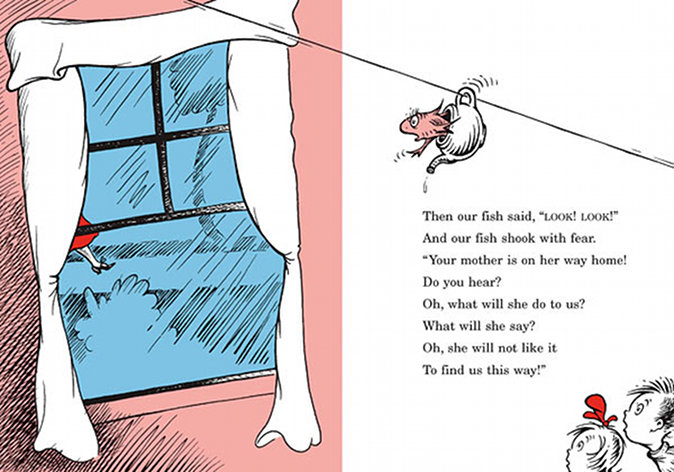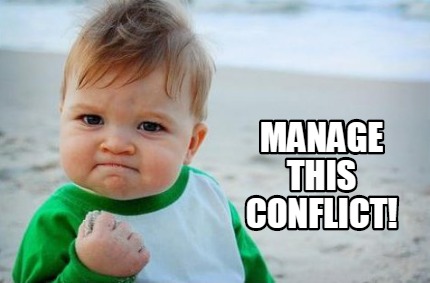Conflict is about character.
I always put it in its own category, but maybe it is just a facet of a character. C.S. Lakin, an author who also wrote this essay on conflict, says conflict is shaped by the things a character values. Take that thing away or endanger it, then build a story as the character struggles to regain it.
Examples:
Dr. Seuss's The Cat in the Hat: Little boy wanted house to be clean and chores done before Mom gets home. This is challenged by the appearance of the cat, who proceeds to ruin everything.
 |
| Crisis moment. |
Roald Dahl's The BFG: Giant runt doesn't believe in eating humans. This is challenged every day as he watches the other giants go out to eat them.
Point made? As I said, I had always thought of conflict as separate from character. It turns out that you grow a character, and then a conflict comes from/in relation to the character.
So what did my Settled character value? ... It seems he valued his marriage, and he enjoys normalcy instead of lunacy. Apparently, then, the conflict should have been something threatening his marriage. The lunacy thing was a bit of a sideshow, really.
The next question on my mind was when to introduce conflict. Lakin said to do it as soon as possible ... unless you are laying a foundation for the conflict to stand on. I once wrote a short story where the entire introduction was focused on solidifying the relationship between the main character and her younger sister. Then I killed off the younger sister and made my main character deal with it (she didn't do so well).
So note to self: Unless I am purposefully setting up the conflict, it needs to be introduced as soon as possible. There needs to be something to carry the reader through the story.
And a P.S. to that note: Remember to at least have two levels of conflict: Outward and inward. This adds depth to both the conflict and the storyline.
I also thought this was worth noting:
Certain genres and age groups will limit or restrict the type and depth of conflict the writer can explore. Special interest publications allow the writer to target a more specific conflict. YA novels and stories will limit the degree to which you can explore sexual conflicts and physical violence, but will heighten the importance of emotional conflict. A primarily male or female audience will vary in the type and style of conflict. A Christian publisher is more likely to focus on internal conflicts, rather than physical or sexual conflicts. (http://www.fictionfactor.com/articles/conflict.html)


No comments:
Post a Comment